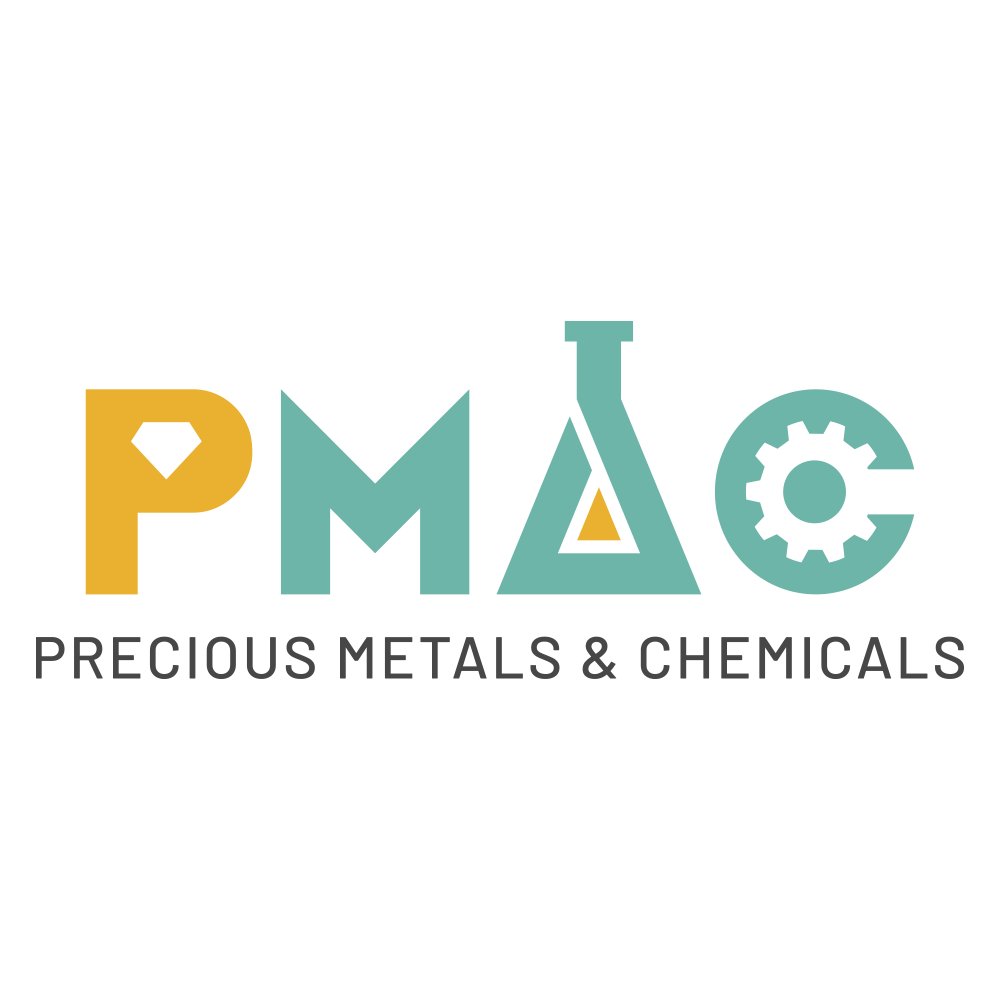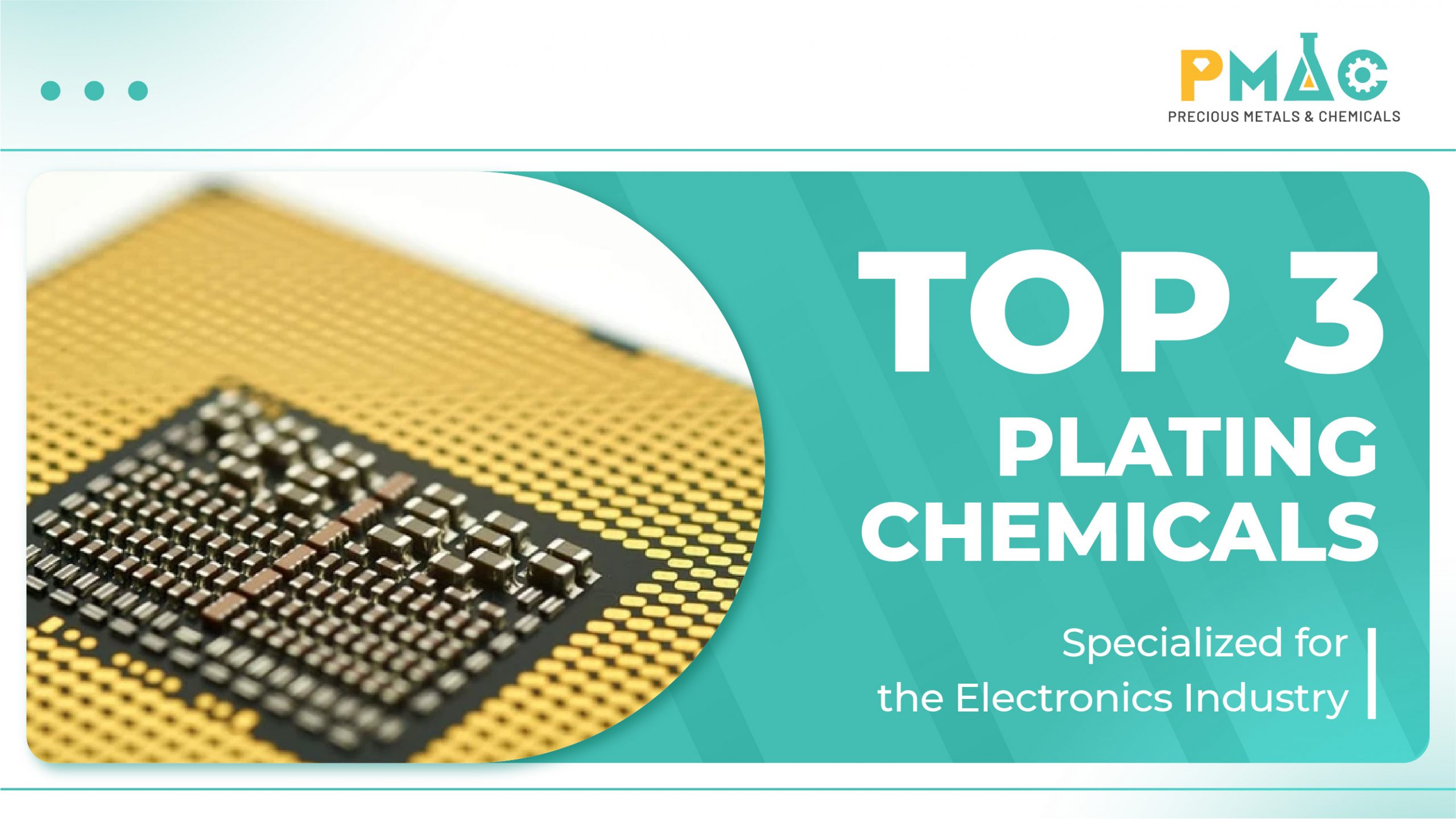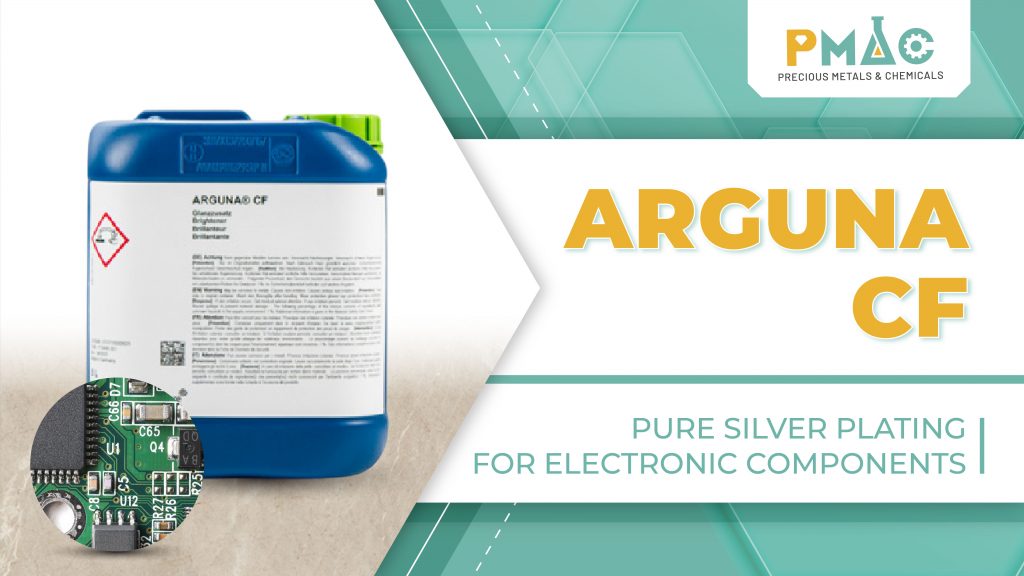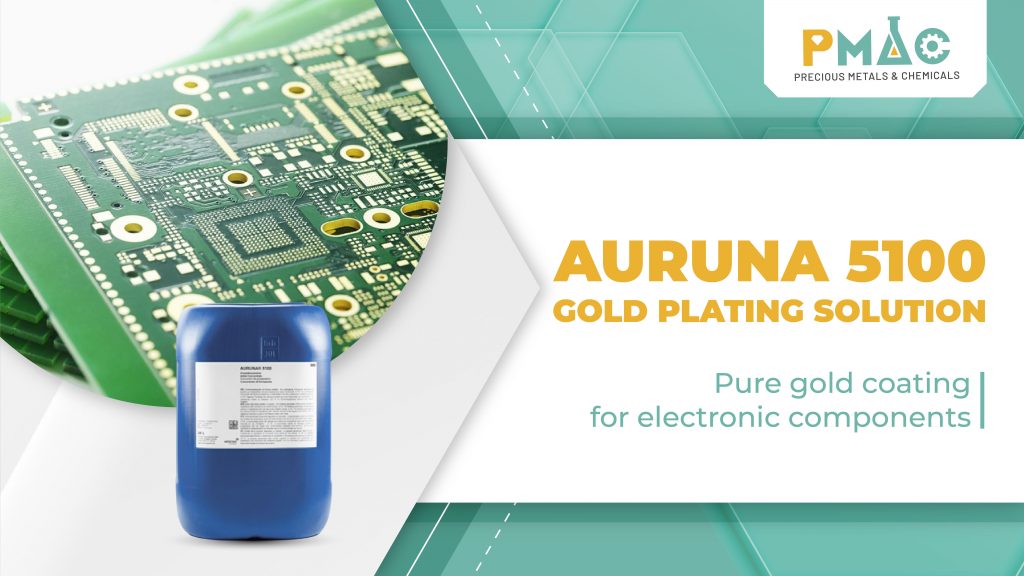In the era of Industry 4.0, the requirements for electrical conductivity, surface durability, and oxidation resistance in electronic components are becoming increasingly stringent. Therefore, the use of specialized electroplating chemicals that meet international standards has become a key factor in helping electronics manufacturers enhance product quality, optimize production processes, and meet global export requirements.
Among the current product lines, Umicore (Germany–Belgium) chemicals distributed by PMAC Vietnam are considered the gold standard of the industry, thanks to their high purity, excellent coating uniformity, and outstanding electrical stability.
Join PMAC as we explore the Top 3 specialized electroplating chemicals for the electronics industry in 2025, solutions that have helped hundreds of leading electronics companies and factories optimize their performance.
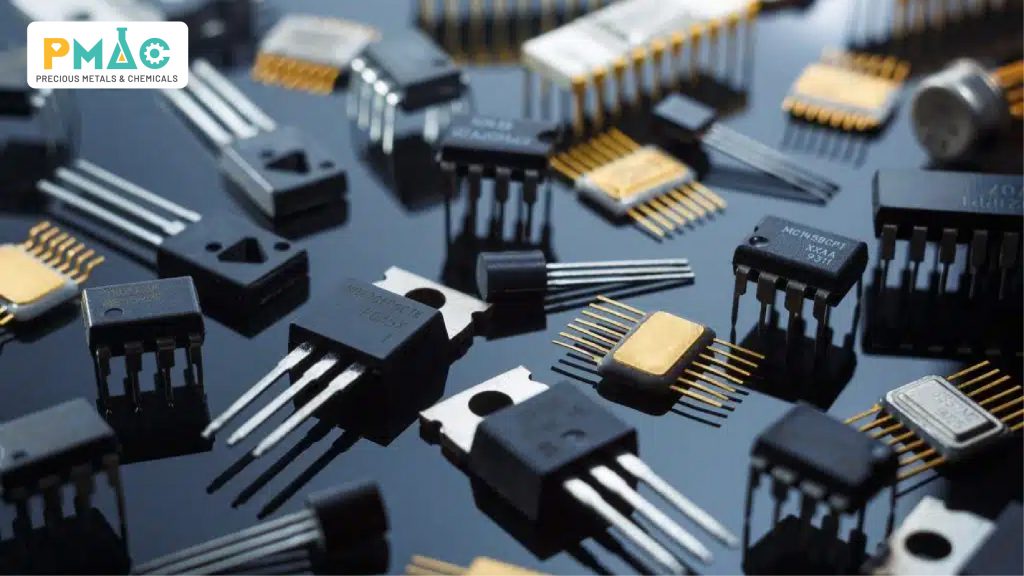
Figure 1: Specialized electroplating chemicals for electronic components
I. What Is plating?
Electroplating (also known as metal plating) is the process of coating a thin layer of metal onto the surface of another material using electrochemical or chemical methods. The primary purpose of electroplating is to enhance a product’s aesthetic appeal, durability, corrosion resistance, electrical conductivity, or light reflectivity.
The base material typically a metal such as copper, iron, or an alloy — is immersed in a solution containing the metal ions to be deposited. When an electric current is applied, the metal ions in the solution adhere to the surface of the base material, forming a thin, uniform coating layer.
Examples:
– Gold or silver plating for jewelry to enhance luster and perceived value.
– Nickel or chrome plating for mechanical components and electronic parts to prevent rust and improve conductivity.
II. Main Components of electroplating Chemicals
1. Metal Salts
In an electroplating solution, metal salts serve as the primary source of metal ions that form the coating layer on the substrate. When an electric current passes through the plating bath, metal ions (M⁺) in the solution migrate toward the cathode (the object being plated). At this point, the ions gain electrons and precipitate as a solid metallic layer that adheres firmly to the product’s surface.
Examples:
– Gold plating: using gold salt KAu(CN)₂ → forms a pure gold coating.
– Silver plating: using silver nitrate AgNO₃ → produces a bright, reflective silver layer.
– Nickel plating: using nickel sulfate NiSO₄ or nickel chloride NiCl₂ → creates a corrosion-resistant nickel layer.
2. Conductive Agents
These substances enhance the electrical conductivity of the plating solution, allowing the electric current to distribute evenly and ensuring that the metal layer adheres uniformly across the entire surface of the product.
Commonly used agents include sulfuric acid (H₂SO₄) and chlorides (NaCl, NH₄Cl), which help stabilize current flow and prevent issues such as uneven plating or surface burning—particularly important when plating complex or finely detailed parts.
3. Additives
Additives are considered the “technological secret” of each plating bath, determining the desired qualities of the final coating such as brightness, smoothness, and adhesion strength. Though present in very small quantities, they have a significant impact on both the quality and appearance of the metal coating.
Common types of additives include:
– Brighteners: Enhance the reflectivity of the metal surface after plating, improving its visual appeal—crucial in jewelry and electronic component manufacturing.
– Leveling agents: Ensure even ion distribution, producing a flat, smooth surface without ripples or roughness. This is particularly beneficial for small, intricate, or unevenly shaped parts.
– Surfactants: Reduce surface tension in the plating solution, allowing metal ions to deposit evenly across the entire product surface, even in recessed areas or narrow gaps.
4. Stabilizers
Though used in very small amounts, stabilizers play a critical role in extending the lifespan of the plating bath, reducing operational costs, and maintaining consistent productivity during manufacturing. By preventing unwanted precipitation of metal salts, stabilizers keep the solution clear, clean, and balanced, ensuring stable electrochemical reactions.
Additionally, stabilizers contribute to producing coatings that are uniform, dense, and durable, preventing issues such as porosity, pitting, or peeling after finishing. As a result, they significantly enhance both the quality and longevity of the plated product.
III. Top 3 Electroplating types for the Electronics Industry
1. ARGUNA® CF – Premium Fine Silver Electrolyte
ARGUNA® CF is a high-speed fine silver electrolyte designed for depositing satin to semi-bright silver coatings with excellent adhesion, solderability, and bonding properties. The electrolyte is optimized for use in high-speed equipment and ideal for selective fine silver plating. Key Advantages:
– High-speed electrolyte for selective fine silver deposition.
– Contains no free cyanide in new makeup.
– Compatible with reel-to-reel plating using flow or spray systems.
– Produces smooth, uniform semi-bright coatings.
– Excellent adhesion, soldering, and bonding characteristics.
Used for contact surfaces in semiconductor and electronic components, as well as lead frames for soldering, wire bonding, and conductive adhesive applications.
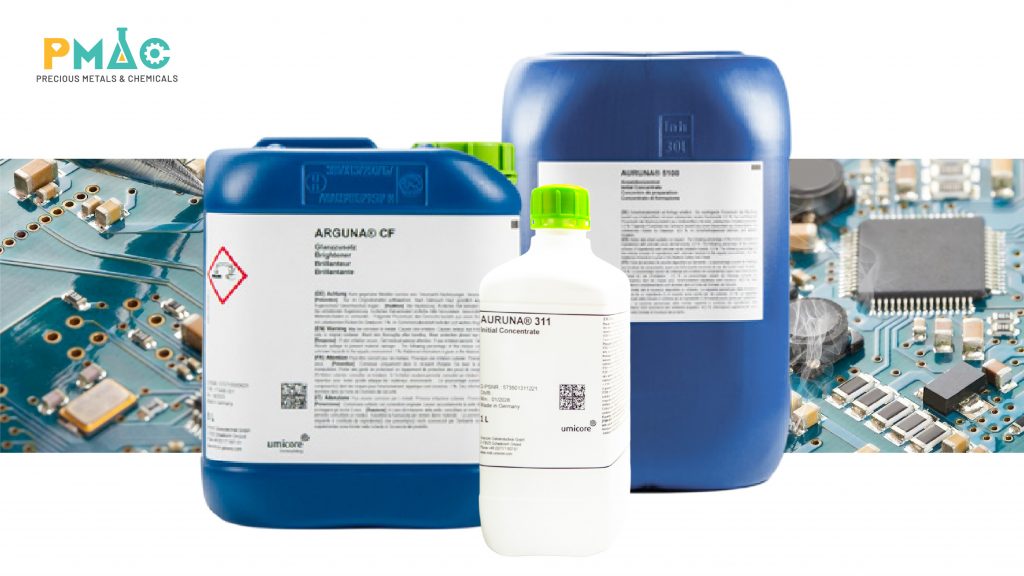
Figure 2: Arguna CF electroplating chemical
2. AURUNA® 5100 – Pure Lemon-Yellow Gold Plating Solution
AURUNA® 5100 is a neutral fine gold electrolyte developed for producing matte, lemon-yellow gold coatings. It is specially designed for applications requiring outstanding adhesion and soldering performance, making it ideal for electronics, semiconductors, and printed circuit boards. Key Advantages:
– Neutral electrolyte ensuring even and stable coating thickness distribution.
– High current efficiency for optimized production throughput.
– Safe and user-friendly operating conditions.
– Excellent adhesion and soldering properties ensuring stable electrical contact.
– Low contact resistance suitable for microelectronic components.
3. AURUNA® 311 – Gold Plating Solution for Stainless Steel and Nickel with Superior Adhesion
AURUNA® 311 is a high-acidity Au-Co gold electrolyte, specially designed for stainless steel, electrical contacts, and industrial components requiring both technical and decorative excellence. Key Advantages:
– Produces a rich, bright gold deposit with thickness up to 10 µm, meeting European aesthetic and technical standards.
– Hardness of 160 HV with excellent adhesion across multiple metal substrates for a stable, glossy, and conductive coating.
– Available in a cobalt-free version, compliant with RoHS environmental standards, supporting global sustainability certifications.
– Compatible with rack, barrel, and reel-to-reel plating, offering stable performance across a wide temperature range.
AURUNA® 311 is the preferred solution for manufacturers demanding superior bonding, brilliant color, and long-term plating stability in industrial and decorative applications.
IV. Key considerations when using plating chemicals
1. Maintain Clean Plating Tanks and Equipment
Before starting the electroplating process, it is essential to clean the entire plating bath, racks, electrodes, and workpieces. The surface of the substrate must be completely free from dust, oil, rust, and oxides using a specialized cleaning solution. Proper cleaning ensures that metal ions adhere uniformly, preventing defects such as uneven coating, peeling, or rough surfaces.
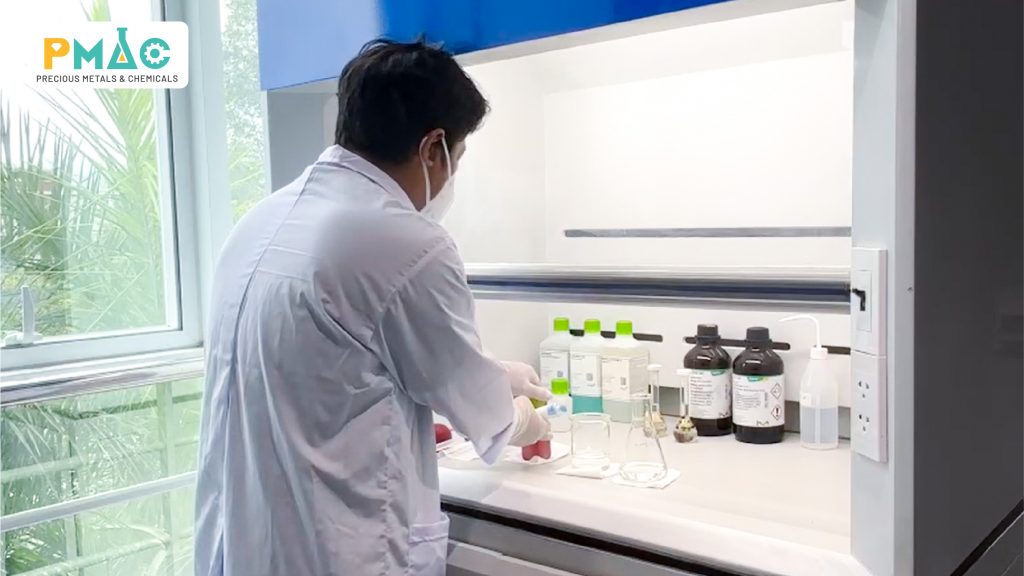
Figure 3: Important notes when using electroplating chemicals
2. Control Temperature, pH, and Solution Concentration
Key parameters such as temperature, pH, and metal salt concentration directly affect the deposition rate and quality of the plated layer.
– Low temperature slows down the plating rate, while excessive heat may cause solvent evaporation and additive decomposition.
– Unstable pH can lead to uneven coatings and increased oxidation.
– Solution concentration should be regularly tested and replenished to maintain consistent and efficient plating performance.
Careful monitoring of these factors helps ensure a stable, high-quality, and uniform coating across all production batches.
3. Use Certified, International-Standard Chemicals
Only use certified electroplating chemicals with verified origins and compliance with international safety regulations. This not only guarantees operator safety but also ensures that the final products meet export quality standards and remain environmentally sustainable.
Additionally, selecting a trusted supplier of plating chemicals is a critical factor in maintaining process consistency and coating quality. Businesses should prioritize suppliers with:
– Designing and implementing international-standard electroplating processes, customized for each product type and substrate material.
– Providing technical training on system operation, chemical safety, and environmental protection.
– Offering 24/7 technical support, including troubleshooting plating bath issues, analyzing coating defects, and optimizing production efficiency.
V. Certified Electroplating chemical suppliers in Vietnam
1. Key Criteria for Choosing a Reliable Electroplating Chemical Supplier
When selecting an electroplating chemical supplier, businesses should evaluate several factors to ensure product quality, production efficiency, and long-term process stability.
– Products must be certified to international safety and quality standards.
– The supplier should have a qualified technical team capable of providing expert consultation, process guidance, and plating bath troubleshooting.
– A transparent warranty and after-sales policy that supports customers throughout product usage.
2. PMAC – Official Distributor of Umicore Electroplating Chemicals in Vietnam
In Vietnam, PMAC is the official distributor of Umicore gold electroplating chemicals — a global leader in precious metal plating technologies. PMAC has established its reputation as a trusted supplier, delivering comprehensive solutions for manufacturers in jewelry, electronics, and precision engineering.
With over five years of industry experience, PMAC is committed to providing:
– Genuine Umicore products imported directly from the manufacturer.
– Specialized technical consultation to help clients optimize their plating processes.
– Ready-to-ship inventory ensuring a stable and reliable supply chain.
3. Technical Support and Comprehensive Solutions for Businesses
PMAC is more than a distributor — it acts as a strategic technical partner, supporting clients across all stages of production.
Our key services include:
– Designing and implementing international-standard electroplating processes tailored to specific products and substrate materials.
– Providing professional training on system operation, chemical safety, and environmental protection.
– Offering 24/7 technical assistance for plating bath troubleshooting, coating defect analysis, and production optimization.
Conclusion
The quality of the plating layer plays a crucial role in determining the durability, electrical conductivity, and visual appeal of components. Choosing internationally certified electroplating chemicals not only helps businesses enhance production efficiency, but also ensures process stability, minimizes technical risks, and increases the overall product value.
With AURUNA® 215, AURUNA® 500, and AURUNA® 311 solutions from the world-renowned brand Umicore, combined with PMAC Vietnam’s comprehensive technical support, manufacturers can achieve uniform, long-lasting, and eco-friendly plating layers that fully comply with international export standards.
PMAC is not just an authorized distributor, but a strategic technology partner—committed to providing comprehensive, safe, and efficient electroplating solutions for various industries, including electronics, jewelry, watches, and precision engineering.
👉 Contact PMAC for expert consultation on optimized plating processes and to experience premium electroplating solutions from Umicore
PMAC Joint Stock Company
HCM: High-Tech Center, 4th Floor, HUTECH Building, D1 Street, High-Tech Park, Tang Nhon Phu Ward, Ho Chi Minh City
HN: 22B Ơ2 Linh Dam Peninsula, Hoang Liet Ward, Hanoi City
Hotline: (+84) 938 085 278
Website: pmac.asia
